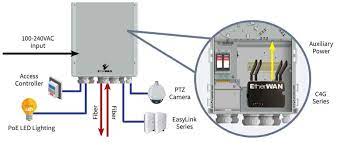In the ever-evolving landscape of business technology, equipment rental companies must adapt to stay competitive. One crucial step is implementing equipment rental software to streamline operations and enhance customer service. However, to maximize its potential, this software must seamlessly integrate with your existing systems. In this blog post, we will explore the benefits of integrating[Read More]
Business Tech
Navigating tech trends with the help of technology consultants
In an era where technology evolves at a breakneck pace, keeping up with the latest trends can be daunting. Businesses and individuals alike face the challenge of integrating new technologies effectively. This is where technology consultants come in, offering expertise and guidance to navigate these complexities. As you delve into the rapidly changing landscape of[Read More]
A Comprehensive Guide to Hiring Top Laravel Developers
Having a robust and scalable web application is crucial for business success. Laravel, an open-source PHP framework, has emerged as a popular choice for developers due to its elegant syntax, extensive libraries, and powerful tools that streamline the development process. However, the key to leveraging Laravel’s full potential lies in hiring the right developers. This[Read More]
7 Tips for Maximizing Your Rental Income Without the Hassle
Generating a lucrative stream of revenue from rental properties can be a rewarding experience. However, managing the minute details involved in renting can quickly become overwhelming. With strategic planning and some industry insights, you can simplify the process. Particularly, thanks to Airbnb listing management, landlords now have access to tools that help streamline their operations,[Read More]
The Truth Behind AI Website Builders
AI Website Builders: Are They Worth the Time? Artificial design intelligence responds to the needs of thousands upon thousands of people willing to build an online store or a blog by themselves. But there is a question here, even two. Are online AI website builders worth it? Can they really replace a pro web design[Read More]
How is the DevOps Culture Transforming Software Development?
In recent years, we’ve witnessed a seismic shift in the landscape of software development. This transformation is underpinned by the adoption of a DevOps culture, which emphasizes collaboration, automation, and continuous improvement. At its core, DevOps challenges traditional development and operational models, fostering an environment where building, testing, and releasing software happens more rapidly, frequently,[Read More]
Expanding Your Franchise? Finding an Easy Franchise Website Builder
If a franchise wants to attract customers, it has to nail its website – research indicates that 78% of users consider a firm’s trustworthiness based on how good its site looks. This is where a franchise website builder comes in. It provides tailored solutions for the specific problems faced by franchise businesses, including how to[Read More]
Preparing for Your Outdoor PoE Installation
Power over Ethernet (PoE) technology has made significant advances in the last 20 years. PoE is no longer limited to 15W of power over 100 meters/ 330 feet of cable. It can now support 100W of power over 300, 800, 1000 meters, and more when supported by a PoE extender. Additionally, data rates continue to[Read More]
Enterprise Software Development Trends for 2024
Enterprise software development focuses on creating and maintaining applications that serve the operational needs of large organizations. These organizations rely on complex and robust software systems to handle various business processes, including customer relationship management (CRM), enterprise resource planning (ERP), and supply chain management (SCM). Enterprise software is designed to be scalable and reliable,[Read More]
4 Absolute Ways to Find Customers and Generate Higher Sales
A company’s target market comprises people who share equivalent demands, desires, and purchasing patterns. Businesses across a range of industries can grow their income, enter emerging markets, and create more complex client acquisition and retention tactics with the support of a consumer base. Acquiring more clients may assist your employer in becoming more profitable overall[Read More]









